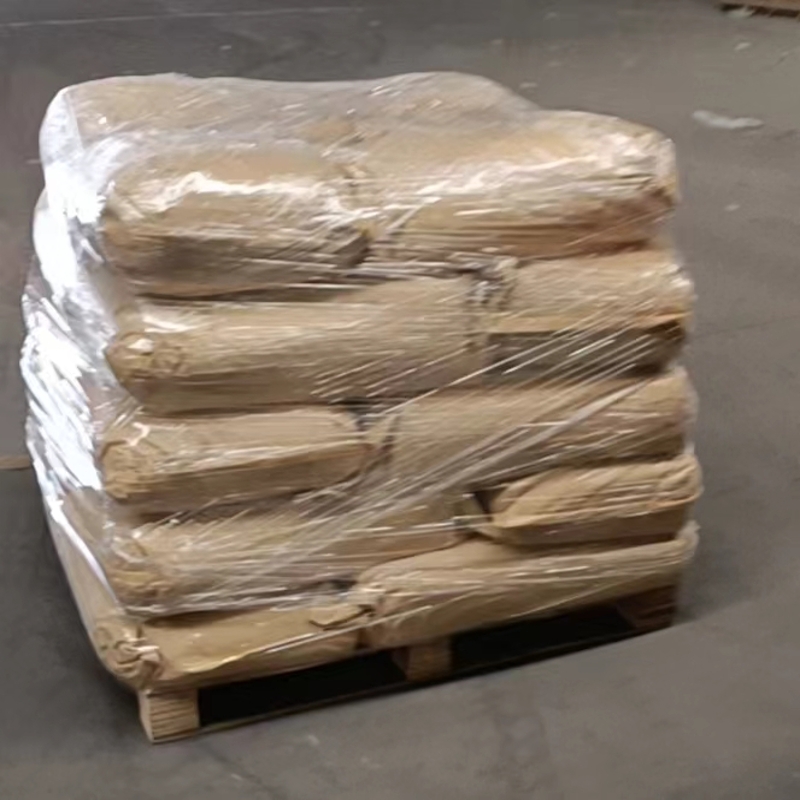-
Categories
-
Pharmaceutical Intermediates
-
Active Pharmaceutical Ingredients
-
Food Additives
- Industrial Coatings
- Agrochemicals
- Dyes and Pigments
- Surfactant
- Flavors and Fragrances
- Chemical Reagents
- Catalyst and Auxiliary
- Natural Products
- Inorganic Chemistry
-
Organic Chemistry
-
Biochemical Engineering
- Analytical Chemistry
-
Cosmetic Ingredient
- Water Treatment Chemical
-
Pharmaceutical Intermediates
Promotion
ECHEMI Mall
Wholesale
Weekly Price
Exhibition
News
-
Trade Service
1.
Safety culture emerges and develops along with the survival and development of human beings.
The nuclear leak on Three Mile Island in the United States in 1979, especially the explosion of the Chernobyl nuclear power plant in the Soviet Union and Ukraine in 1986, the two nuclear accidents caused by human misoperation shocked the entire world, and the international nuclear industry is even more shrouded in huge In the midst of the panic, it was the field of the international nuclear industry that first proposed the concept and requirements of safety culture
Subsequently, the concept of nuclear safety culture was extended to safety management in other industrial fields, including aerospace, and realized that the prevention of industrial accidents must strengthen the construction of enterprise safety culture
On the basis of this understanding, the safety science community in our country has introduced the ideas of this high-tech field into traditional industries, and promoted nuclear safety culture to the fields of general safe production and safe life, thereby forming a safety culture in the general sense
Due to different professional fields and different perspectives, safety culture will have various definitions, ranging from narrow to broad
(1) Safety culture in a narrow sense
(1) Academia generally believes that safety culture is the sum of the characteristics and attitudes existing in units and personnel.
(2) The definition of corporate safety culture in China’s "Corporate Safety Culture Construction Evaluation Criteria" (AQ/T9005-2008) is a unity of safety values, attitudes, ethics and codes of conduct shared by the employee groups of the company
(2) Safety culture in a broad sense
(1) Some scholars believe that safety culture is the sum of the spirit, concept, behavior and physical state of safe production and safe life created by human safety activities
(2) Some scholars believe that safety culture is in the process of human survival, reproduction and development, in all fields of production, life and even practice, in order to ensure human physical and mental safety (including health) and make it safe, Engage in all activities comfortably and efficiently, prevent, avoid, control and eliminate accidents and disasters (man-made and natural), in order to establish a safe, reliable, harmonious and coordinated environment and a safety system for matching operation, and to make humans change It is the sum of safe material wealth and safe spiritual wealth created by making the world more safe, happy, and long-lived, and making the world friendly, peaceful, and prosperous
There are still many expressions.
The safety culture of an enterprise is the collective behavior, or ethos, of its employees
2.
Safety culture, like everything else, has a process of origin and development
(1) The origin and development of human social security culture
Although safety culture is formally defined, it originated from nuclear safety culture, but tracing back to history, Chinese people have summed up many good warnings with profound safety awareness in long-term production practices, which all reflect the basic characteristics of modern corporate safety culture
You must think about danger in peace, and be prepared
Qu Tu and moving salary, derived from the "Han Shu · Huo Li Biography"
.
"Chen Wen Ke has a master, and see that his stove is straightforward, and there is a accumulated salary next to it
.
The guest is the master, and it is more turbulent, and his salary is moved away
.
If it is not, the owner will be in danger.
The owner should not .
Fire.
.
.
" Only by taking effective measures in advance can disasters be prevented
.
This is the manifestation of "prevention first" and the inevitable way to prevent accidents
.
Preparing for the rain, from "Poetry·Youfeng·Yu"
.
"It's not rainy or rainy, so you can take care of it
.
" Although it is not raining, it is necessary to repair the doors and windows of the house to prevent rain
.
If you want to be safe, you also have to do so.
This is an effective accident prevention strategy
.
Anti-microbial and Du Jian, originated from "Yuan History·Zhang Zhen Biography"
.
"If there are inexhaustibles, we should also prevent
small things from happening before they happen .
" Start with the smallest things and pay attention to the "spots" of things, so that accidents and disasters will be stopped in time as soon as they occur
.
"A ruler can float a city through a dike; an inch of smoke meets a hole and destroys thousands of houses", from "Liu Zixin Discussing Risks".
Although the earthworm is small, if it penetrates the embankment, it can flood the entire city
.
For example, if you don't pay attention to small accidents, it will cause big disasters
.
Lost sheep must be repaired, from "Warring States Policy·Chu Policy IV"
.
"It's not too late to make up for
the lost sheep .
" Although the loss has been suffered, it is necessary to find a way to remedy it to avoid further losses
.
The ancients said: "Those who suffer from a tenderness will gain one's convenience, and those who experience the same thing will gain a sense of wisdom
.
" Therefore, the saying: "Eat one hydrogen
, and gain one wisdom .
" "The previous car has been overturned, and then I will know how to feel better
.
" "A lesson from the past
.
" Although these good sayings and old sayings are "after a fight", they are still good policies that must be done after an accident
.
Changzhi can last for a long time, from "Han Shu·Jia Yi Biography"
.
"Building the momentum of long-term security, and growing the cause of governance," Only by sticking to the career of long-term governance can the momentum of long-term security be realized
.
This is not only true for national stability, but also for production safety
.
The safety awareness taught by the old sayings can be regarded as a valuable "safety warning" in modern times
.
However, it should be noted that in the face of modern, complex and diverse accidents and disasters, it may not be enough to treat them in a dogmatic way
.
As the secret art of war "Thirty-Six Strategies·General Theory" says: "Yangyin sets up the principle, the opportunity lies in its emptiness; the opportunity cannot be built, but it is located in it
.
" Only with the vision of change and development in the practice of safety production Experience, in order to be invincible in the contest with accidents and disasters
.
Society is progressing, safety culture is also progressing, society is developing, safety culture is also developing, safety culture will always develop along with the development of human society and human civilization
.
(2) Development of corporate safety culture
Safety culture belongs to the social attribute, and society is a community composed of people.
Among them, enterprises are a community formed by common economic interests.
Therefore, corporate safety culture belongs to the category of social safety culture and has extremely important status and significance
.
In the development process of each enterprise, its safety culture usually has multiple development stages
.
The domestic safety standard "Evaluation Criteria for Enterprise Safety Culture Construction" (AQ/T9005-2008) issued by the State Administration of Work Safety divides the level of safety culture construction into 6 stages (levels) for scoring
.
(1) The first stage (level) is the instinctive reaction stage
.
The enterprise believes that safety is far less important than economic benefits; the enterprise believes that safety is a pure investment and cannot be repaid; the behavioral safety of managers and employees is based on instinctive protection of themselves; employees do not pay attention to their own safety and lack self-protection awareness And ability; employees lack understanding of job operation skills, safety regulations, etc.
: companies and employees do not believe that accidents are inevitable: employees generally lack a sense of security in the workplace and the environment
.
(2) The second stage (level) is the passive management stage
.
The company does not or only develop a safety system for inspections; most employees do not pay special attention to safety; the company believes that accidents cannot be avoided; safety issues are not regarded as important risks for the company; only the safety supervision department is responsible for safety management; Employees do not think that they should be responsible for their own safety; most people passively learn safety knowledge, safe operation skills and procedures; companies have insufficient investment in safety skills training; employees lack sufficient trust in the safety of the work site
.
(3) The third stage (level) is the active management stage
.
Recognize the importance of safety commitments; believe that accidents can be avoided; safety is included in the enterprise's risk management content; management must realize that most accidents are caused by the unsafe behavior of front-line workers; pay attention to the regulation of employee behavior; Plan and proactively train employees in safety skills; employees are aware of the importance of learning safety knowledge; promote safety by improving regulations, procedures and engineering technology; begin to use indicators to measure safety performance (such as injury rate); adopt to reduce accident losses Work hours to motivate safety performance
.
(4) The fourth stage (level) is the employee participation stage, with systematic and complete safety commitments; companies realize that relevant management policies and imperfect implementation of rules and regulations are common causes of accidents: most employees are willing to take responsibility for personal safety Responsibility for health; the company realizes the important role of employee participation in improving the level of production safety; pays attention to the knowledge of occupational diseases and work-related injury insurance; most front-line employees are willing to work with the management to improve and improve the safety and health level; the accident rate is stable at a relatively high level Low level; employees actively participate in the assessment of safety performance; the company has established a complete safety incentive mechanism; employees can easily obtain safety information
.
(5) The fifth stage (level) is the team mutual assistance stage
.
Most employees believe that safety and health are very important from an ethical and economic perspective; promote a healthy life>
.
(6) The sixth stage (level) is the continuous improvement stage
.
Ensuring the safety and health of employees in the workplace and at home has become the core value of the company; employees share the concept of "safety and health is the most important decent job"; out of full confidence in the entire safety management process, the company adopts more diverse indicators To demonstrate safety performance; employees believe that preventing non-work-related accidental injuries is equally important; companies continue to improve, and constantly adopt better risk control theories and methods; companies invest a lot in the improvement of employees’ home safety and health: companies are not just Satisfied with long-term (years) record of no accidents and serious near misses; safety awareness and safety behaviors have become an inherent habit of most employees
.







